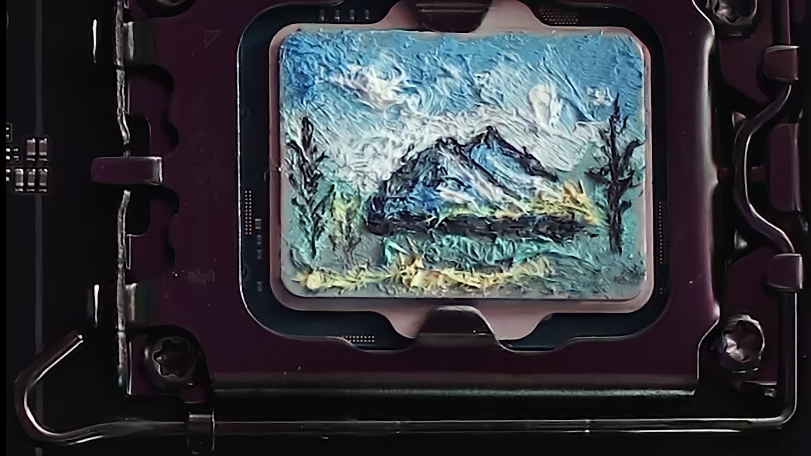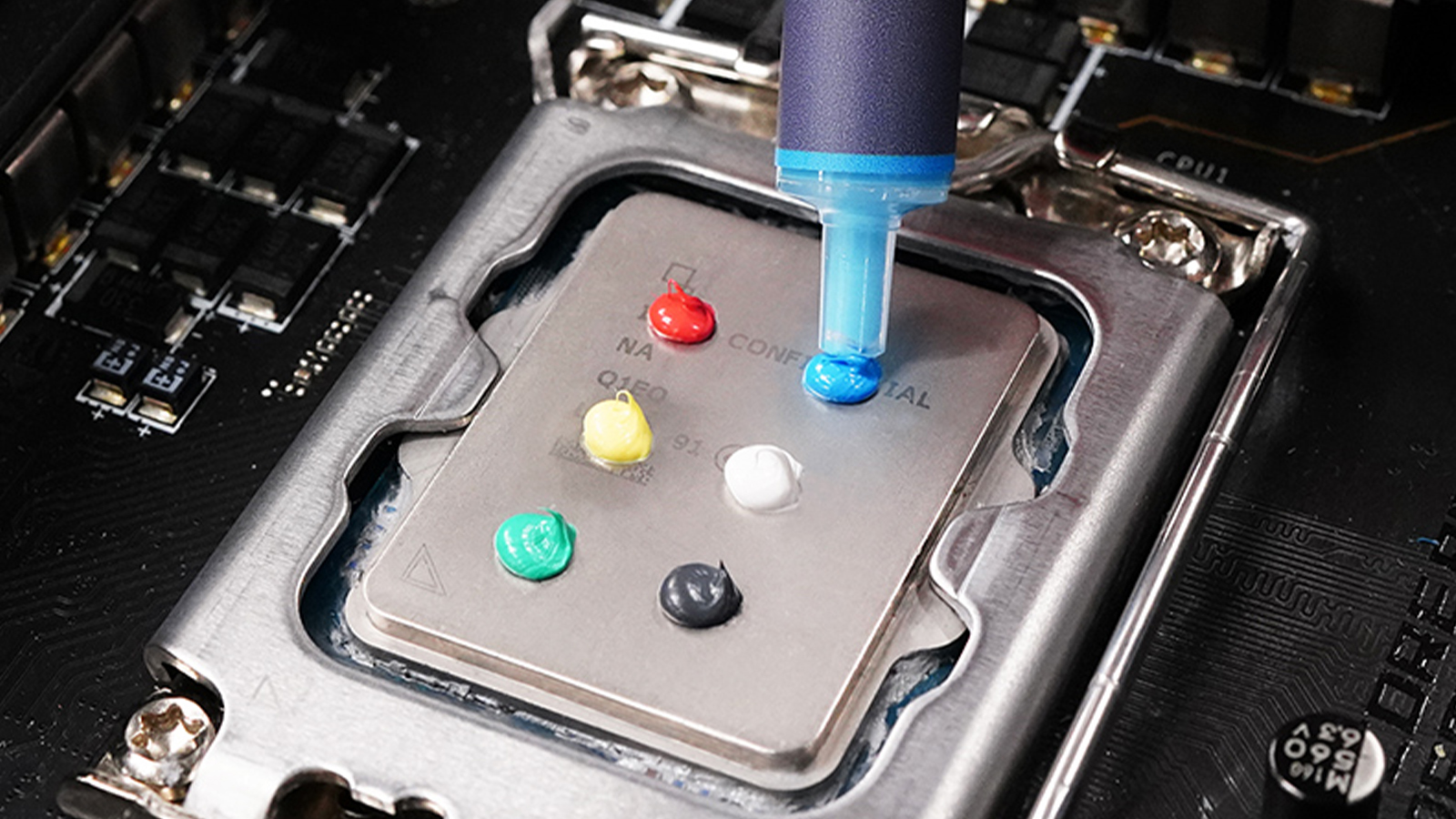
Yesterday on X, Cooler Master opted to show off its latest CryoFuze 5 thermal paste series by using all six available colors to plant a landscape on an existing 13th Gen Intel CPU and Gigabyte Z790 Aorus Master motherboard.
There was some controversy around a machine error translation that made people think the product was named "Cooler Master CryoFuze 5 AI thermal paste" when, in fact, the original text was saying the nano-diamond thermal paste should be good enough for high-power CPUs with onboard NPUs.
Just a happy little landscape, thanks to our Cyrofuse thermal paste.🎨@AORUS_NA #pcmr pic.twitter.com/1Tki9alnVcAugust 27, 2024
The six colors used to create the painting above can also be pictured below in more reasonable pea-shaped sizes. These colors are red, blue, yellow, white, green, and black. And, of course, neither the thermal paste configuration recorded above nor the one pictured below should be considered a practical use case for a single CPU—colored thermal paste, in general, is just a tiny frill on an otherwise standard, near-invisible part of everyday PC building.

While both of the thermal paste configurations highlighted by Cooler Master for its CryoFuze 5 thermal paste are fairly cool-looking (no pun intended), we want to take a moment to remind users of the proper way how to apply thermal paste to your CPU.
Typically, the proper way to do this is to squeeze out an amount akin to a pea on most CPUs or even multiple "grains of rice" in a grid formation on larger processors. While you need thermal paste or other TIM (thermal interface material) to cover the whole CPU, you also want it to be evenly distributed and a thin layer that transfers heat as directly as possible. Too much or unevenly applied paste can cause thermal issues with your CPU.
Even so, it's still pretty amusing to see Cooler Master take its super high-performance CryoFuze 5 thermal paste and different coloring variations this far. On paper, the thermal paste has what it takes to rival the best thermal pastes on the market, though, of course, it doesn't compare to something like liquid metal TIM (though using that comes with much heavier risks than standard thermal paste).







